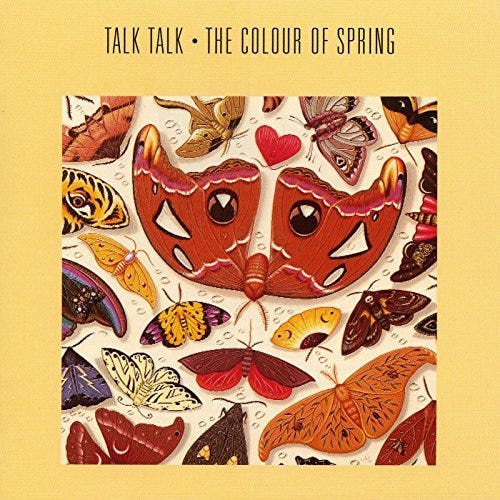September Talk
We kayaked until the night became a brand new month full of new music
I took last week off from the newsletter and enjoyed a long Labor Day weekend and the end of the traditional summer season, but I’m back at it this week... and I promise no more Neil Diamond references.
Before diving into the music, here’s a snapshot from my kayak trip in the White Mountains and lakes region of New Hampshire—a reminder of how good it feels to step away and reset.
So here we are in September, the ninth month of the year—already. It’s the season when new music begins arriving in full force, the holiday releases roll out, and the smell of pumpkin spice is in the air. This month and throughout the fall, some incredible albums are on the way. I’ll be putting together a playlist at the end of this week’s writing to capture some of the highlights for September.
Talk Talk
This week, I want to talk about Talk Talk. (👈 That’s not an epizeuxis, I checked.)
The British band’s career was essentially in the 1980s, spanning from 1981 to 1991. They leaned heavily into synth pop and new wave. Still, by the end of their time together, they had ventured into some experimental territory that many now consider the beginnings of the post-rock movement. Their catalog has much depth, many styles of music, but there’s one album in particular that never fails to surprise me with all its layers. Every listen reveals something new, and I find myself returning to it often. It’s from 1986, and although we’re headed into fall, it's called The Colour of Spring.
My first encounter with Talk Talk was hearing 'It’s My Life' on the radio many, many times. That single had everything I loved about early new wave: driving rhythms, that 80s glossy production, and Mark Hollis’s unique voice upfront and center with clarity. At the time, I thought of them as just another band living in the New Wave era, standing in the shadows of Duran Duran, Culture Club, or Tears for Fears. It wasn’t until the 1990s that I first heard "The Colour of Spring," and it completely shifted my perspective on the band.
This album is a leap forward, and it’s the sound of a band unafraid to let go of the pop music label. It’s melodic and uplifting, yet there’s an undeniable undercurrent of melancholy that runs throughout this record. Hollis’s voice is at the center of that balance. He’s expressive and at times fragile, making sure to leave space for the arrangements to be heard. His delivery draws you in as the layers of instrumentation build around him.
What makes The Colour of Spring stand out for me is its structure. It’s patient and atmospheric, not rushing toward a chorus. Looking back, I believe this was Talk Talk at their most complete, where they bridged their pop beginnings with the adventurous spirit that would define their next two albums, ‘Spirit of Eden’ and ‘Laughing Stock.’ It was released in 1986, but could have been released ten or fifteen years later. ‘Life Is What You Make It’ was a single you might be familiar with, but the following song, ‘April 5th’, is one of my favorites. The strings, the organ, the subtle and muted vocals—how it all comes together is just pure music joy.
For me, The Colour of Spring remains the turning point, the moment Hollis’s voice, the band’s structures, and their layers of sound all came together to create something timeless. It was the beginning of Post-Rock.
The term post-rock first appeared in the mid-90s, when music journalist Simon Reynolds used it in his review of Bark Psychosis’ 1994 album Hex. He later defined it as music that uses the instruments of rock but bends them toward “non-rock purposes.”
When I think about that definition, it’s hard not to trace the lineage back to Talk Talk. Let me know what you think.
September Playlist
Thank you for reading!
JB




